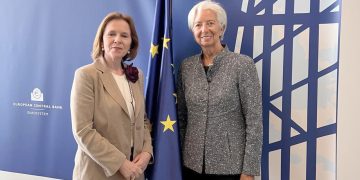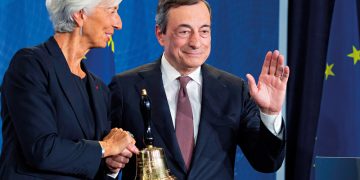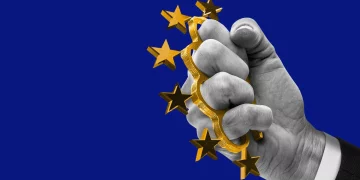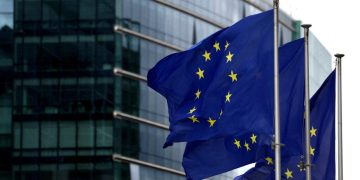Introduction
In the third quarter of 2024, the European payment sector experienced a significant shift as transaction volumes driven by the Payment Services Directive 2 (PSD2) surged by 25% compared to the previous quarter. This spike coincided with sharp fluctuations in the stock prices of major U.S. payment companies such as PayPal, Square, and Visa, stirring conversations among investors and regulators alike. What explains this striking connection between European regulatory innovation and U.S. market disruptions? This article investigates how PSD2’s open banking data growth in Europe signaled strategic and market challenges for the U.S. payment industry, reshaping global payment dynamics.
Key Data and Background
The European Union’s PSD2 framework, designed to enhance competition by mandating banks to provide authorized third-party providers access to customer payment data, has revolutionized the payments landscape. By Q3 2024, open banking transactions in Europe grew by 25% quarter-over-quarter, according to the European Payments Council. This increase highlights widespread consumer adoption of fintech services such as account aggregation and instant payment initiation.
At the same time, U.S. payment firms faced pronounced stock market volatility. PayPal experienced intraday swings exceeding 15%, and Visa’s shares declined 8% over the quarter. This turbulence reflects investor concerns about competitive pressures and regulatory uncertainty in the U.S., where open banking lacks a unified framework.
The surge in European transaction volumes stems from factors including regulatory support for fintech innovation, consumer readiness for digital payment solutions, and the lowering of entry barriers through open APIs. Conversely, the U.S. market remains fragmented with uneven regulatory guidance, constraining fintech scalability and innovation.
These dynamics have created an environment where European regulatory success foreshadows disruption and strategic reevaluation within the American payment sector.
Cross-Market Impact
The 25% transaction growth in Europe under PSD2 is reshaping the competitive landscape worldwide. European fintech firms have capitalized on open banking to develop innovative payment products, particularly payment initiation services (PIS), which saw a 30% rise in usage in Q3 2024 per European Central Bank data. This innovation challenges the traditional card-based model dominated by global payment networks and forces incumbents worldwide to adapt or lose ground.
U.S. payment companies, reacting to these developments, have increased investments in open banking technologies and partnerships. However, the absence of a cohesive U.S. regulatory approach slows innovation and elevates compliance complexity. This regulatory asymmetry fuels stock market volatility and investor uncertainty, prompting a strategic rethink in the American payments ecosystem.

Comparing this period with PSD2’s early implementation between 2017 and 2019 shows a marked difference. Initial optimism gave way to more substantial disruption as consumer behavior shifted post-pandemic and digital adoption accelerated. Unlike previous cyclical technology shifts, the current upheaval is structural, driven by regulation and market transformation with long-term consequences.
Divergent Expert Opinions
Visa’s 2024 Q4 report praises PSD2’s positive impact, suggesting that Europe’s open banking environment fosters sustainable innovation, operational efficiencies, and consumer engagement. Visa highlights its strategic pivot towards API-driven platforms and fintech collaboration as ways to mitigate near-term volatility and capture long-term advantages.
In contrast, U.S. payment analysts criticize the country’s fragmented regulatory environment. Organizations like the Electronic Transactions Association argue that the lack of PSD2-like mandates restricts innovation, limits fintech scalability, and imposes higher operational costs, contributing to stock instability and uncertain growth trajectories.
Independent voices from policy think tanks stress the importance of balancing innovation with privacy and cybersecurity risks inherent in open banking. Fintech startups urge regulatory streamlining to foster growth without compromising data security.
Future Outlook and Strategic Recommendations
Looking ahead, if U.S. regulators adopt PSD2-like open banking standards, American payment firms could close the innovation gap, enhancing competition and service offerings. Otherwise, incremental progress will persist amid continued market pressures from European fintech entrants, sustaining volatility.
Prolonged regulatory delays risk widening the gap, with U.S. incumbents losing market share to more agile competitors. Investors should watch regulatory reforms, transaction growth trends in Europe, and payment companies’ technology investments closely.
Strategic recommendations for investors include diversifying geographically to tap into Europe’s fintech growth, assessing companies’ fintech partnerships, and monitoring open banking adoption as indicators of future performance.
Conclusion
The Q3 2024 surge in European PSD2 open banking transactions served as a clear signal of impending disruptions within the U.S. payment industry, revealing how regulatory environments shape innovation and market dynamics. European fintech’s rapid growth contrasts with U.S. regulatory fragmentation, resulting in strategic uncertainty and investor volatility. Understanding these dynamics is critical for stakeholders navigating the evolving global payments landscape.





































